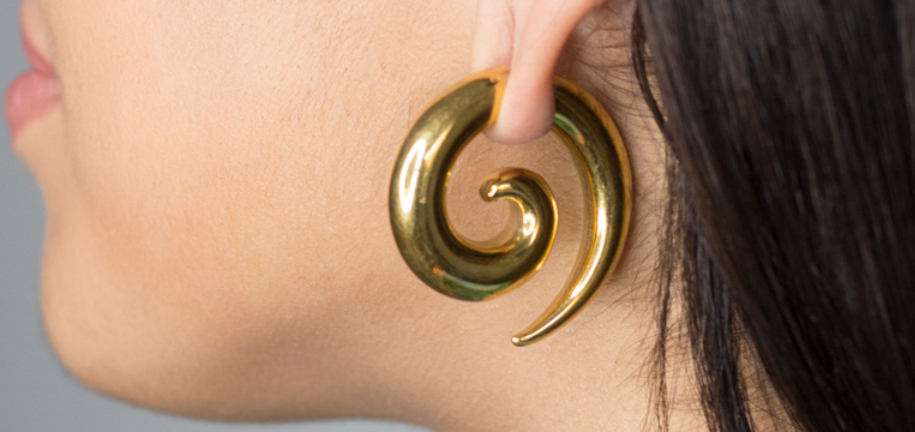
All About Stretching Piercings
A Guide to Tapers for Safe Stretching of Body Piercings
When we talk about in the piercing industry, we usually refer to a cone-shaped rod between 3 - 8 cm in length used in stretched piercings. However, a taper can also be shaped like a spiral or have a C-shape. Most importantly, it has a small diameter at one end and a large diameter at the other. Many tapers are held into place with the help of o-rings.
What materials should I use?
The material most people use is acrylic. It's cheap and is relatively lightweight.
On the other hand, acrylic can absorb liquid, so it’s not ideal to use in a healing piercing. But as long as you don't rush and try to stretch from 1.2mm to 10mm in a week, there should be no problem using acrylic.
The safest material to use if you don’t change your jewelry often is surgical steel, as it does not absorb fluids. However, steel is very heavy, and if you leave the taper in permanently, the steel’s weight can pull on the earlobe, thus pulling your stretch askew.


How can I stretch my piercing?
- First of all, you should be 100% sure you want to do it. Generally, your hole will not shrink back if you stretch further than 6, 8, or 10 mm - but it’s individual from person to person.
You should think of stretching your piercing as a permanent body modification.
- Your piercing needs to be 100% healed before you start stretching it. The first taper should be thicker at the wide end than the diameter of your piercing hole.
It is highly recommended to take a warm bath and massage your ear before putting in your taper. It will make your ear more elastic.
- Over time, you slowly move the taper from the small end to the thick end. Once the taper has passed through the hole, the hole has enlarged. You can now insert different jewelry so that the hole remains a new size. Be kind to your piercings, and do not stretch quickly if you want to avoid keloids and other complications.
This is just one method of stretching your piercing. There are more ways, such as dead stretching or the taping method, for which you gradually add teflon to your taper.
How do I take care of my stretch?
You can take advantage of piercing lubricants for stretching; they will help you avoid a lot of pain!
If you notice a smell coming from your stretching, don’t be put off. Just use a reliable piercing deodorant like Holey Butt'r.

